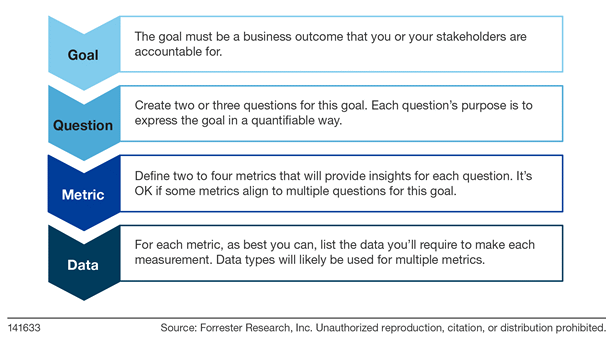Too many firms today are playing a data-to-insights game of telephone. In the data analytics version, the insights you deliver fail to drive many actions that improve outcomes. The insights tumble into a gap between you and your budget-holding stakeholders who drive actions and have accountability for outcomes. The larger your gap, the more competitors who are better than you are at this are coming after your customers.
Here’s a way to know if you’re stuck in the telephone approach. Identify all the reports and dashboards you and your team provide to stakeholders. Stop updating and sending those, or if that’s too extreme for your firm’s culture, send an email telling recipients that you plan to do that, and ask for their feedback. Forrester hears from data and insights pro’s who have done this that they’re amazed that nobody, or at most a person or two, asks about the reports. The reports were not driving actions and outcomes. Disheartening? Yes. But you’ve diagnosed a problem, and there’s an effective solution for it: using Goal-Question-Metrics-Data (GQMD) framework to drive more actions from outcomes.
The gap between data-to-insights and actions is not primarily about data or technology. It’s about lack of alignment between insights teams and stakeholders on what matters most to business outcomes. “Teams most successful in driving actions from data-to-insights use a specific framework to set goals and metrics,” said an executive we talked to from a BI firm. “What framework a team uses isn’t as important as having clear alignment around a tight set of goals — no more than three to five.” Using the GQMD framework (see figure) will drive that alignment.

Tips on working through each GQMD element:
Align on goals that feed what stakeholders’ performance is measured on. Be sure to specify the “by how much” and “by when.” An effective goal: “Increase online sales by 10% by end of next quarter.” Ineffective goals: stating an approach or tactic with no quantification, such as “become more data-driven” or “implement personalization.”
Develop questions about each goal that validate whether the goal is actionable. Set the baseline for what you need to know to achieve it. E.g., for the online sales goal above, “What is the current trend in dollar value and channel for online sales vs previous quarter?” Additional questions will select the elements that matter most in achieving that goal in your specific setting, such as conversion rate, average order size, cart abandonment rate, product inventory issues.
Select, or design, metrics that will provide answers to the questions. Double-check that you and the stakeholders aren’t selecting metrics just because they’re available. Re-ask the question you’ve identified and confirm that you’ve listed all the metrics that answer the question and therefore are measuring against the goal.
Identify the data you’ll use to make the measurements you’ve defined. Depending on your firm’s data-to-insights maturity, you may require some iteration on this one. Refuse to be stymied by “we don’t have the data we need.” With the stakeholders, go back to the metrics, the questions, or even the goal to find a way to use this powerful framework from one end to the other. You can use roadblock situations – aligned with stakeholders about the goal that’s important – to improve your data for the future.
Use the GQMD framework to end the game of data analytics telephone you and your business partners are playing.



